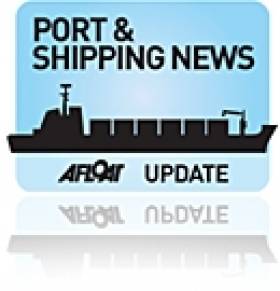Displaying items by tag: 18,000 Containerships
#18,000containerships – According to LloydsList.com, French global containership giant, CMA CGM has joined the small group of container lines to produce good results in the third quarter, with a threefold increase in net profits to $201m as cargo volumes reached an all-time high.
Several other leading carriers lost money in the same period, the exception being Maersk, which outshone the rest of the industry.
Third-ranked CMA CGM achieved a return on invested capital of 8.2%, down from 10.3% a year earlier and below Maersk's 13.8%.
Consolidated turnover was 6.4% higher at $4.4bn, while cargo volumes rose 8.3% to 3.2m TEU. Average revenue per teu decreased by 1.8%.
The group, headed by founder and chairman Jacques Saadé, confirmed that the Ocean Three alliance with China Shipping and United Arab Shipping would launch in early 2015. The partnership was signed in September shortly after the P3 collaboration between Maersk, Mediterranean Shipping Co and CMA CGM was disbanded following rejection by the Chinese competition authorities.
Ocean Three has already been approved by the Federal Maritime Commission in Washington without a detailed review because of its low market share in the US trades.
CMA CGM said its third-quarter performance had been underpinned by steady growth in the Asia-Europe, intra-Asia and Oceania trades.
The line has also expanded in West Africa through its Delmas subsidiary and recently purchased 7,000 new reefer containers. The target is to carry 1m reefer containers in 2015.
Operating costs per teu have declined by 0.4%. Bunker consumption per TEU fell 3.4 % compared with the third quarter of 2013.
The line said this mainly reflected higher vessel utilisation, plus continued energy-efficiency efforts, including modification of bulbous bows. This change, implemented in dry dock, optimises the vessel design to the speeds operated under slow steaming.
Modifications have already been made to 15 vessels, with 10 more planned. This results in fuel and CO2 emission savings in excess of 5% per voyage, the company said.
For the nine-month period, the group's turnover came to $12.5bn, a 4.3% increase over the year. Cargo liftings rose 7.4% to 9.1m teu, and the core operating margin was stable at $638m.
Looking ahead, CMA CGM said it would be taking delivery of six 18,000 TEU vessels in 2015. These are upgrades in the size of six newbuildings under construction in China and South Korea.
Lloyd's List revealed earlier in the year that the specifications of a trio of ships being built at Shanghai Waigaoqiao Shipbuilding have been enlarged from 16,000 TEU to a nominal 17,700 TEU.
This will be the first time a non-South Korean shipyard will construct ships of this capacity. Another three are being built by Samsung Heavy Industries.
When the order for these was originally placed, the size was to be 12,600 TEU.
CMA CGM said the final quarter was likely to be characterised by the usual seasonal volumes slowdown, freight-rate volatility and lower bunker prices, but that its volume growth should nevertheless exceed that of the market as a whole.
For further news stories and much more visit: the Lloyds List website HERE.
























































